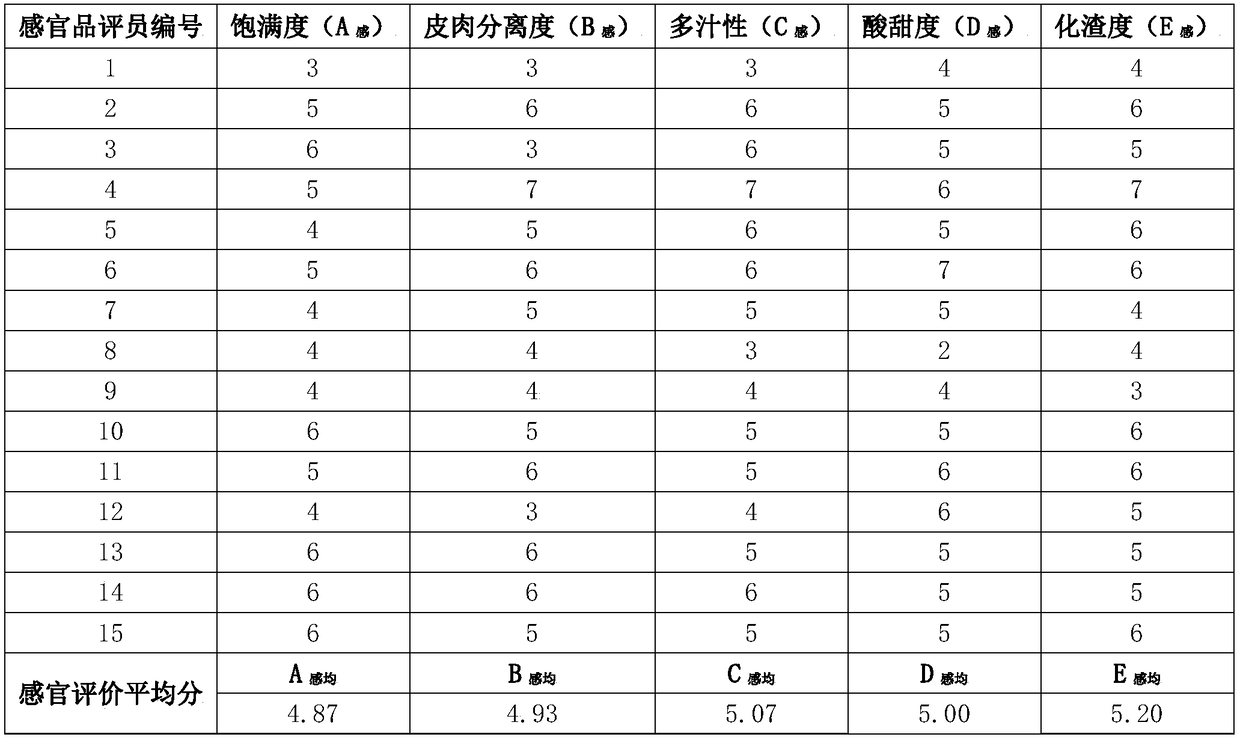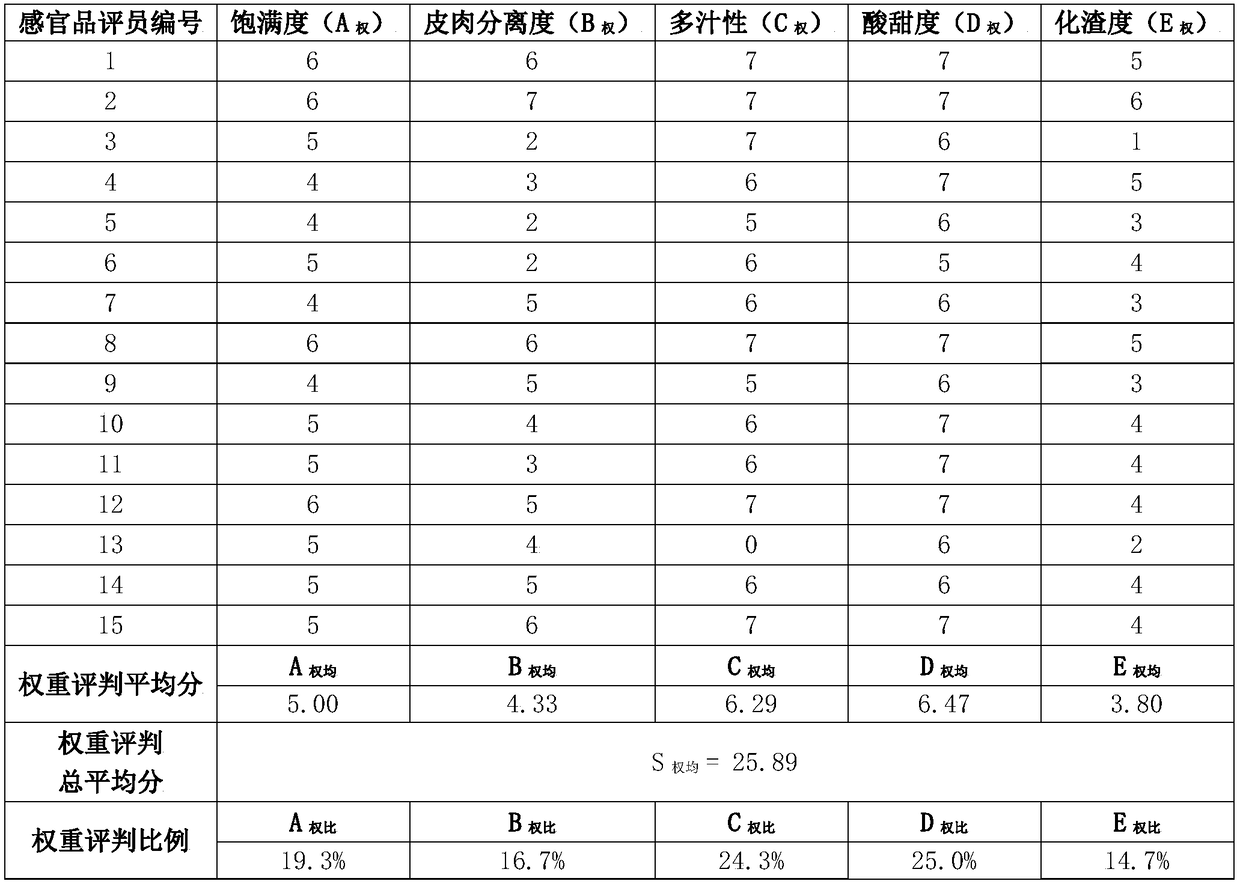Method for rating taste of orange
An orange and taste technology, applied in the field of orange taste rating, to achieve the effect of eliminating instability and volatility
- Summary
- Abstract
- Description
- Claims
- Application Information
AI Technical Summary
Problems solved by technology
Method used
Image
Examples
Embodiment 1
[0057] Step 1. Divide seven No. 1 orange test samples into thirty-five pieces according to the same shape and size, and put five pieces as a group into a sensory evaluation cup as a pre-test sample, and prepare seven pieces in total; The seven-member sensory panel will get a pre-test sample per person, and conduct attribute test and evaluation on it to determine five rating attribute indicators, including plumpness, separation of skin and flesh, juiciness, sweetness and sourness, and slag melting. The indicators include seven scales: dislike very much, dislike very much, dislike somewhat, neither like nor dislike, like somewhat, like and like very much;
[0058] Step 2. Divide fifteen No. 1 orange test samples into seventy-five pieces according to the same shape and size, and put five pieces as a group into a sensory evaluation cup as one test sample, and prepare fifteen pieces in total; Fifteen test samples were randomly distributed to fifteen sensory judges;
[0059] Step 3...
Embodiment 2
[0079] Step 1. Divide seven No. 2 orange test samples into thirty-five pieces according to the same shape and size, and put five pieces as a group into a sensory evaluation cup as a pre-test sample, and prepare seven pieces in total; The seven-member sensory panel will get a pre-test sample per person, and conduct attribute test and evaluation on it to determine five rating attribute indicators, including plumpness, separation of skin and flesh, juiciness, sweetness and sourness, and slag melting. The indicators include seven scales: dislike very much, dislike very much, dislike somewhat, neither like nor dislike, like somewhat, like and like very much;
[0080] Step 2. Divide fifteen No. 2 orange test samples into seventy-five pieces according to the same shape and size, and put five pieces as a group into a sensory evaluation cup as one test sample, and prepare fifteen pieces in total; Fifteen test samples were randomly distributed to fifteen sensory judges;
[0081] Step 3...
PUM
 Login to View More
Login to View More Abstract
Description
Claims
Application Information
 Login to View More
Login to View More - R&D
- Intellectual Property
- Life Sciences
- Materials
- Tech Scout
- Unparalleled Data Quality
- Higher Quality Content
- 60% Fewer Hallucinations
Browse by: Latest US Patents, China's latest patents, Technical Efficacy Thesaurus, Application Domain, Technology Topic, Popular Technical Reports.
© 2025 PatSnap. All rights reserved.Legal|Privacy policy|Modern Slavery Act Transparency Statement|Sitemap|About US| Contact US: help@patsnap.com



